At first glance, it might not seem as if life thrives in the dry, otherworldly expanses of Grand Staircase-Escalante National Monument. The high, rugged patch in southern Utah is mostly known for its jagged cliffs, steep canyons, and vast, arid deserts. But bee biologist Olivia Messinger Carril knows better.
For four years, she and a team of volunteers spent nearly every summer day combing the Delaware-sized area, bit by bit, in search of bees the untrained eye might miss. The main result: An awful lot of bees live there.
Not just your ordinary yellow-and-black striped ones. There were iridescent blue mason bees, purple bees, green bees, and brilliant red bees. Bald bees, hairy bees, “big bumblers you can hear coming from a mile away, and tiny, tiny little ones that are the size of a comma in the books you’re reading,” says Carril, a science teacher at Santa Fe Girls School who does research on the side.
All in all, a whopping 660 species live within the monument’s boundaries. That’s nearly every fifth bee species in North America. Forty-nine of these were entirely new to science, according to the recently published research.

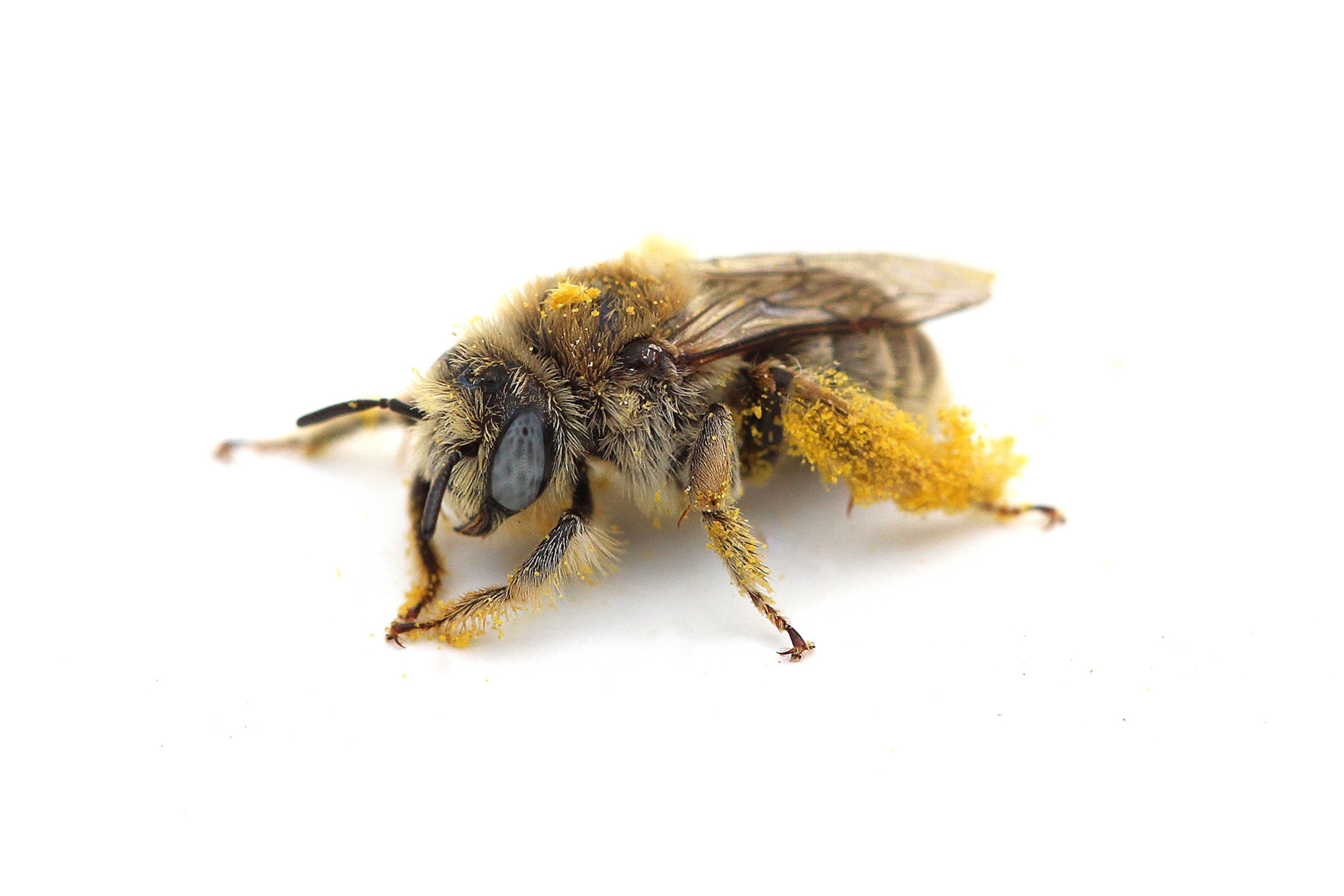
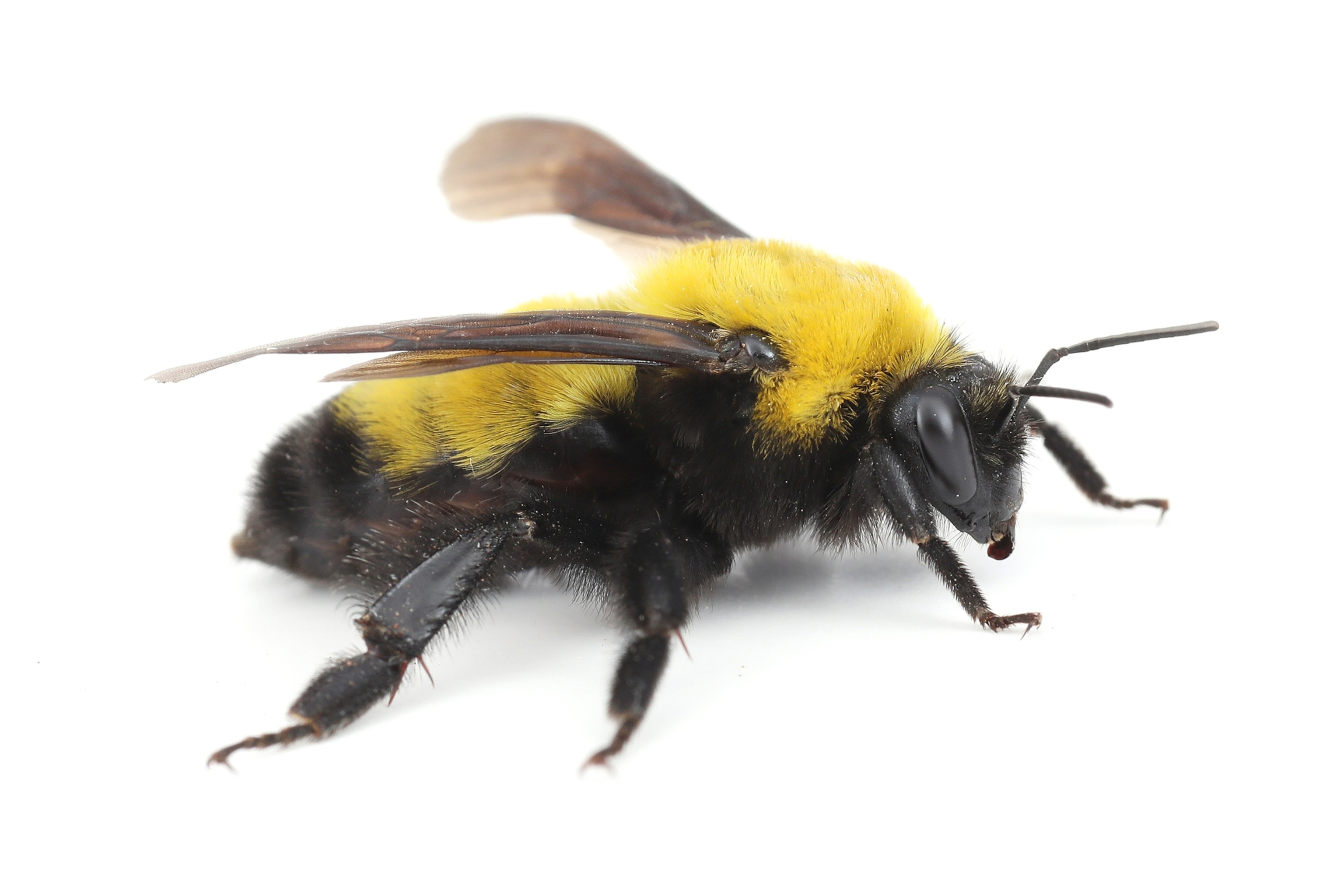
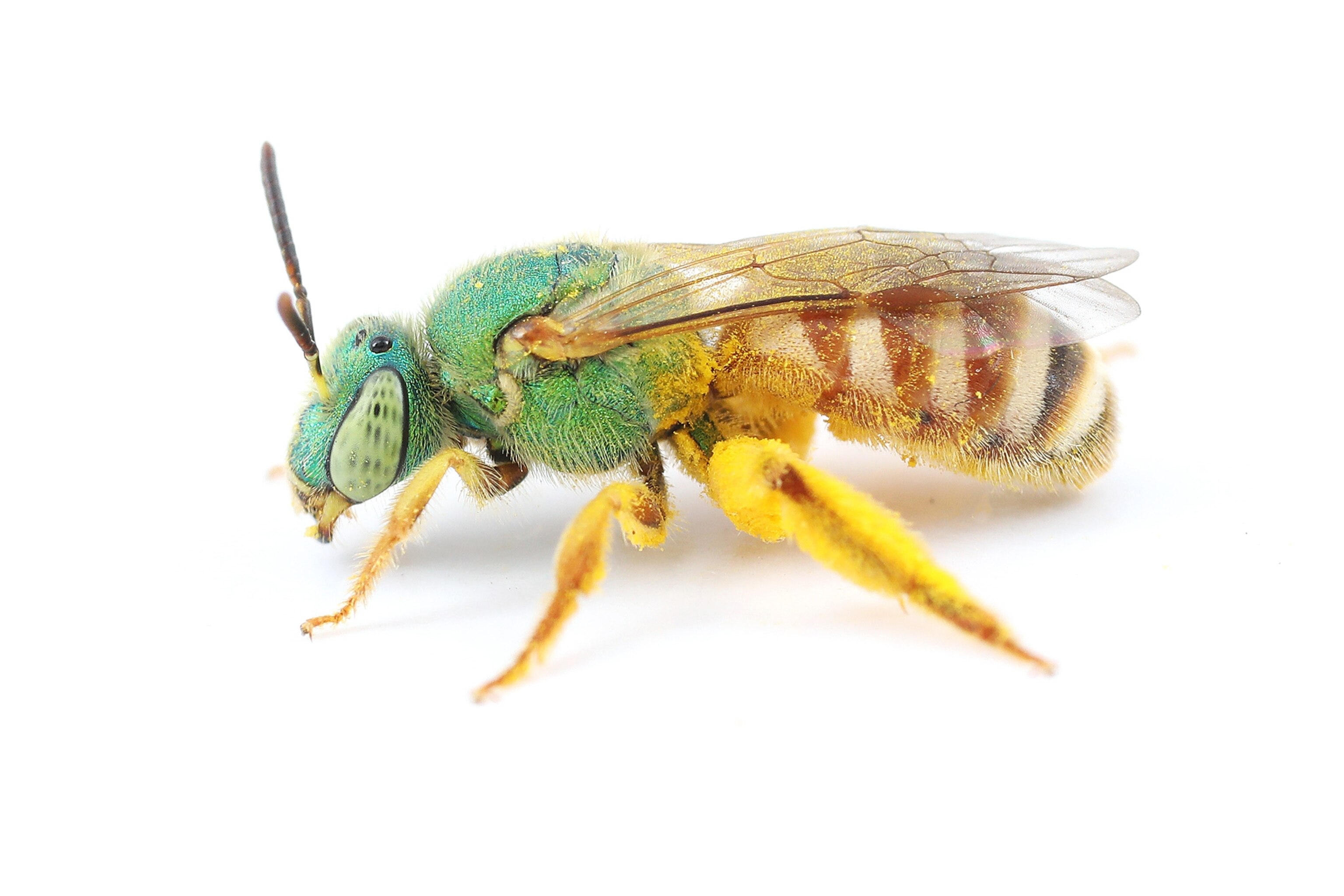
Why this remote patch of Utah is such a busy place for bees is somewhat of a mystery. It likely mirrors the diversity of desert flowers the insects pollinate, as well as the range of habitats—from sandstone canyons and sagebrush-peppered deserts to aspen and pine forests at higher elevations.
But the fate of Grand Staircase-Escalante’s bee hotspot is uncertain. Following President Donald Trump’s decision last year to shrink the 22-year old monument, the area was reduced to half its original size and sliced up into three smaller monuments in February. The once continuous stretch of protected habitat—allowing many animals like cougars and bears to roam freely with little human interference—is now broken up, while the excluded areas could see dramatic changes through development or mining activities.
An uncertain future
So Carril and other researchers decided to do a follow-up study in order to see which bees might be affected. It appeared on December 4 in PeerJ. The good news is that 87 percent of bee species are in protected areas, but that leaves 13 percent, or 84 species, that are no longer found in any of the three new monuments. While many of these species are widespread across the western United States, the list of excluded bees includes a number of uncommon bee species only known to exist here and that are of great interest to scientists.
What that means is hard to say, notes Joe Wilson, a bee ecologist at Utah State University Toole and a co-author on both studies: The plans for the area are still up in the air. The original management plan for the monument stressed that it should stay undeveloped and be maintained in “its primitive, frontier state.”
The Bureau of Land Management (BLM) has yet to decide how to manage the protected lands, nor has it decided what to do with the areas now excised from the monument. It recently detailed its preferred plan: one that “conserves the least land area for physical, biological, and cultural resources,” according to its draft resource management plans and environmental impact statement, and it “is the least restrictive to energy and mineral development.” Nearly 700,000 acres of now unprotected land could be opened to mining for coal and minerals, as well as oil and gas drilling. The document doesn’t mention bees, Wilson notes, even though the agency funded Carril’s first study.
“The impact could be enormous, or it could be minimal, but we really don’t know,” Wilson says. The agency could opt to keep the unprotected bits as primitive as possible, with little roads or infrastructure, leaving the species there unscathed. This might even be the case if only the least intrusive forms of mining—things similar to natural gas extraction—are allowed and are kept at a small scale, Wilson speculates. But if they choose to disrupt large areas of habitat in favor of increasing tourism or destructive mining forms such as large, open pit operations, bee populations may suffer. There’s not a lot of research on how bees in particular are affected by mining activities, he says. However, “anything that negatively impacts the plants will undoubtedly negatively impact the bees, [and] also vice versa.”
Although most of the bees along the Grand Staircase probably don’t pollinate crops—one of the main arguments for protecting bees—preserving this “mind-blowing” diversity is key for keeping the health of the ecosystem intact, remarks Daniel Cariveau, an ecologist at the University of Minnesota who wasn’t involved in either study.
We don’t know what we’re losing without having studied them thoroughly, he adds. “We have all of these amazing species, with high-level diversity, this evolutionary history that’s been going on for millions of years,” Cariveau says. “Are we OK as a society to see them go?”
Jewels in the desert
Scientists aren’t sure why bees flourish in the desert of all places, but the region’s unique constellation of flowers seems to be one reason. Many bees are highly specialized to pollinate particular plants. Some Diadasia bee species, for example, only visit cactus flowers.
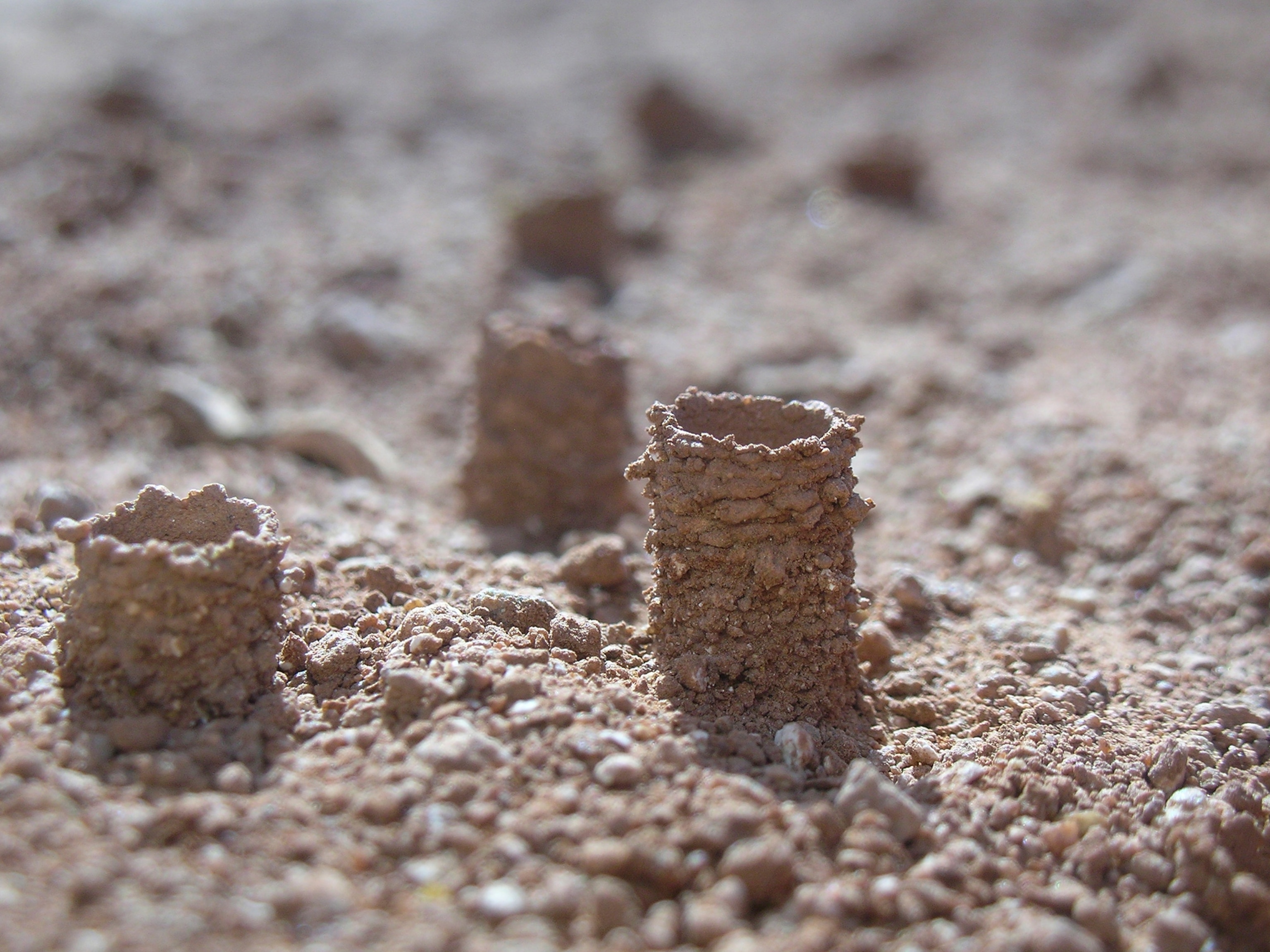
One of Carril’s favorite places along the Grand Staircase is barren save for a few shrubs, but it happens to be a treasure trove of uncommon bees. It lies in the southeastern corner of the original monument, in the now unprotected corridor running between the new Escalante Canyons unit and the Kaiparowits unit. There, the ecologists discovered unique populations of warm-desert bee species, as well as an abundance of so-called “morphospecies,” which look different from known species but aren’t quite unique enough to classify as a new species.
At one point along the dirt road cutting through this area, hundreds of tiny bee nests lie peppered across the dry clay, each one consisting of a hole with an odd, chimney-like column on top. Nobody knows why the architects—Diadasia bees—build their nests this way. One theory is that the structures keep out rainwater, while others think they might prevent parasitic flies from dropping their eggs into the bees’ nests, Carril says, who wrote a whole book on North America’s bees together with Wilson.
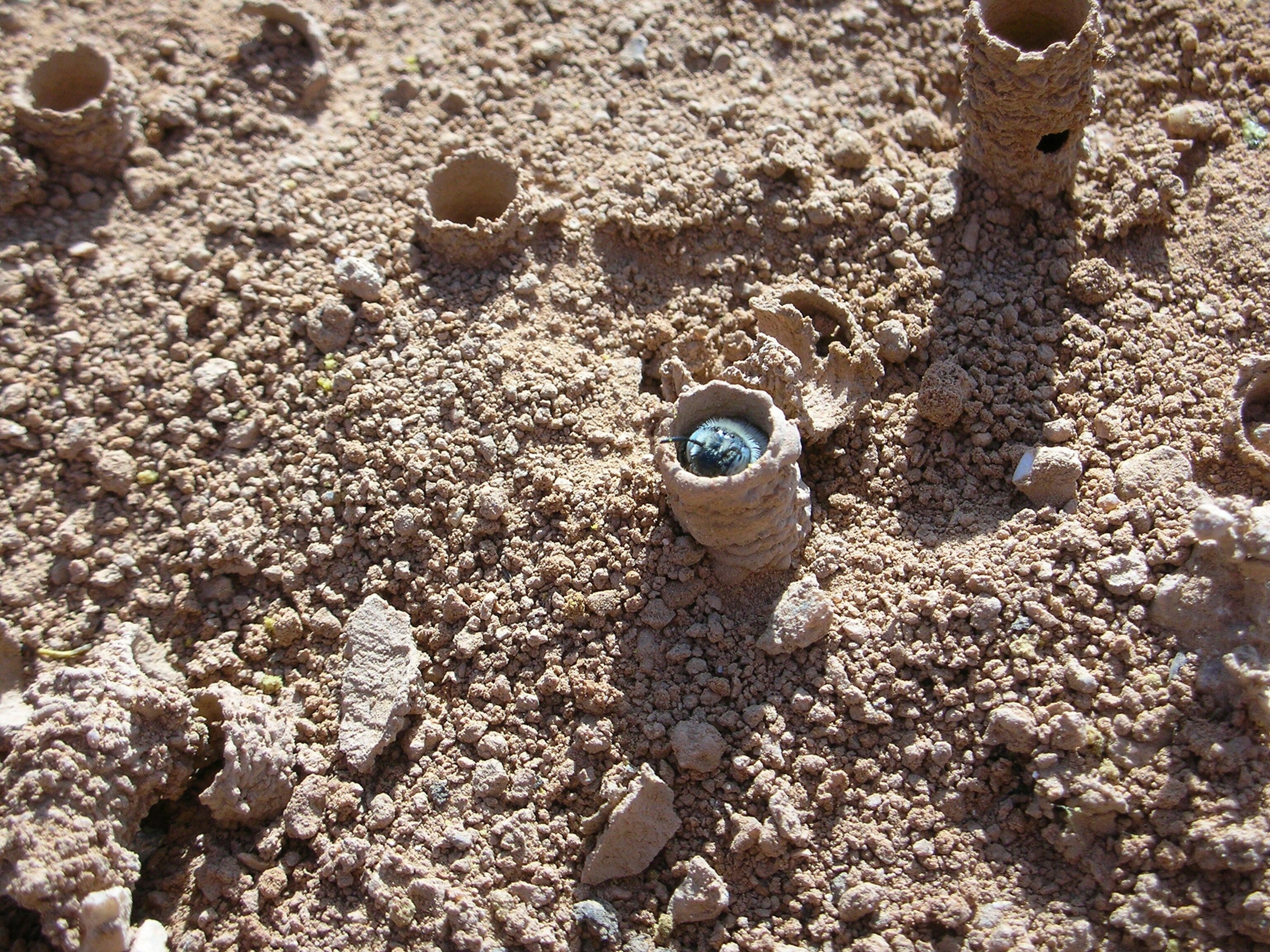
The scenery doesn’t appeal to everyone, says Wilson. “I can see why politicians and businessmen might look at it and say, ‘Oh, we don’t need this part. It’s just bushes in between the cool things.’” What concerns him most about the possible loss of protections to the monument is that they’d make it much harder for scientists to study bees in this area and how their populations fare under long-term trends like climate change. In fact, the scientific value of the area was one of the draws Clinton cited when he established it in 1996.
Some, like Nicole Croft, executive director of the environmental non-profit Escalante Partners, say they’re “hopeful” that the monument’s shrinking can still be reversed. The BLM has yet to review comments it received from the public on its proposed plans before setting anything in stone. And two lawsuits—one of them led by Croft’s organization and others—challenging the legality of Trump’s executive order are still making their way through the courts.
For the moment though, Carril can only speculate about the future of the little Diadasia village, and other bees in Grand Staircase-Escalante. “You have to wonder, when you carve out even just a tiny bit of the pollinator network…what sort of ripple effect down the road that has on everything else.”









